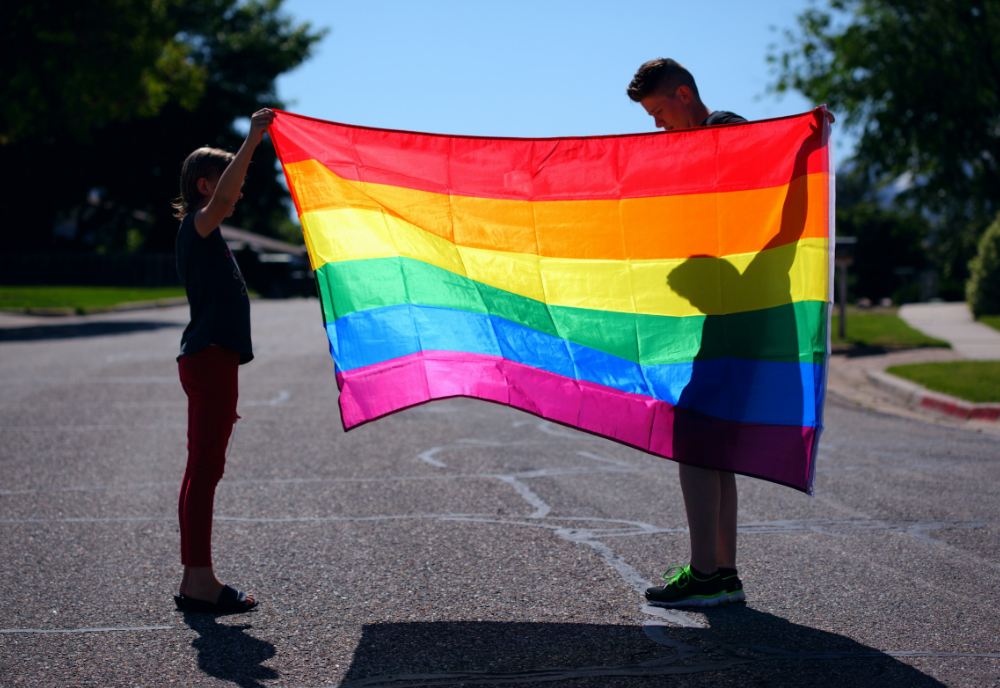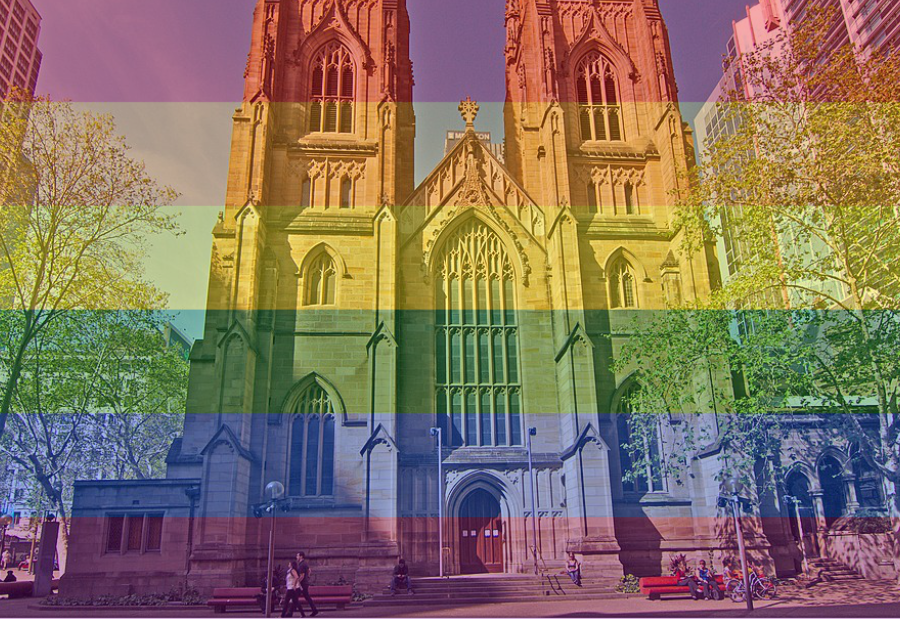In my previous article for Rationale, titled Sex, gender and identity: It’s complicated, I described some of the complexities around people’s sexual orientation and gender identity (SOGI).
I felt there was a need for such an article because it seemed to me that all of the recent pronouncements on the topic were coming from just two extreme and irreconcilable positions. The two sides oversimplify the issues and ignore the science.
The first of these extreme positions on SOGI is advocated by conservative religious people. They believe that sexual orientation – whether you are gay, bisexual or straight – is a lifestyle choice.
Although this is an empirical question, answerable by the sciences of biology and psychology, this is not their source. Their belief is based on the Bible, which clearly states that homosexual acts are an abomination to God, are voluntarily chosen and are, therefore, sinful. Consequently, they say, we must protect children from all influences in this direction.
Regarding gender identity, they claim that God made each of us male or female before we were born, that our genitals show which we are and that no later ‘lifestyle choice’ can overrule this. Note the contradictory positions on lifestyle choice here – sexual orientation can be but gender identity can’t be.
The second of these extreme positions on SOGI comes from the LGBTI community. Many in that community claim that homosexuality is natural, acceptable and innate, and not learned, caught or chosen. It is neither a sinful choice nor a pathology to be ‘cured’. But they are, strangely, non-committal about where it comes from.
Gender identity, on the other hand, is changeable, lies on a continuum and is fluid. Some even claim that gender is a totally-imposed cultural construct and not an innate, biologically-based feature at all. Again, there is a hint of contradiction here.
Such positions on issues around SOGI have become more important as debates on law reform have occurred surrounding issues such as same-sex marriage, religious discrimination, age of consent for sex-reassignment surgery, the rights of same-sex couples to adopt, transgender involvement in women’s sport, people’s right to choose their pronouns, who may use rape shelters, membership of Girl Guides, which prison to be sent to and even access to female restrooms and changerooms.
The two irreconcilable positions have at least two deleterious effects on public conversations about such laws. Firstly, both sides choose to ignore the relevant science. Whether homosexuality or gender identity are freely chosen or biologically determined are clearly empirical questions for the sciences of psychology and biology to answer, not for politics or theology.
Secondly, and subsequently, each issue has been oversimplified into absolutist questions. Is this all good or all bad? Is the answer always A or always B? Should homosexuality be a crime or is it natural and to be encouraged? Is gender identity simply a matter of genitals or is it all made up? Should admission to women’s boxing tournaments depend only on self-report of a female gender identity or should no one born with a penis ever be allowed to compete in suburban archery competitions?
Whether homosexuality or gender identity are freely chosen or biologically determined are clearly empirical questions for the sciences of psychology and biology to answer, not for politics or theology.
When politicians such as Tasmanian Liberal Senator Claire Chandler assert that trans women who are ‘biological males’ must be kept out of women’s sport, the problem – the oversimplification – goes to how we define/differentiate ‘biological males’. Their answer is (over-)simply that these people have penises at birth. But this is only one of at least seven valid alternative criteria, as described in Sex, gender and identity: It’s complicated.
Then politically motivated agitators have tried to stump progressive politicians at doorstop interviews with irrelevant challenges like: “How do you define a ‘woman’?” They want the responder to either look silly as they are stumped by the question or respond with “an adult human female”, which they regard as confirmation that trans women do not qualify. This is poor logic. All it does is shift the burden of definition from ‘woman’ onto the word ‘female’.
On the other hand, members of the LGB Alliance – note the absence of ‘TI’ – in Tasmania have been seeking to exclude trans women who are ‘biological men’ (i.e. have penises) from their social events.
In my previous Rationale article, I described seven ways – at least – that we could choose to distinguish between males and females, depending on the context and why we wish to distinguish. This complexity in nature means that the process of bringing gender discrimination into our laws will inevitably be complicated.
How we decide who may enter women’s sporting competitions may differ from who we allow to change their gender on their birth certificate, who we address as ‘him’ or ‘her’, or our criteria for being sent to a women’s prison.
The most fair, relevant, workable and consistent laws and guidelines can vary with the context and consequences of using alternative criteria such as chromosomes, external genitalia, hormones, self-reported gender identity, appearance and manner, testes versus ovaries, et cetera.
I also described the latest best scientific understanding of the primary origins of both of SOGI’s ‘SO’ and ‘GI’. There is mounting evidence that most of your sexual orientation and your gender identity were formed – neurologically ‘hard-wired’ – under hormonal influence when you were in the womb.
For different reasons, neither side of debate – the religious conservatives and the LGBTI community – want to hear the science. Whatever I say, including the assertions in this article, will be deemed offensive by all the people who care most – by both sides.
The conservative religionists don’t want to hear that homosexuality is hard-wired, biologically-based and natural. This implies that God made it thus. That it can’t be a sin contradicts their interpretations of the Bible.
Equally, they don’t want to hear that gender identity is neurologically-based, perhaps because this means God made a mistake in giving some people a penis but also a female brain?
The LGBTI community doesn’t want to hear that homosexuality results from the precise ‘hormonal soup’ that a foetus is affected by at critical stages of its neural development, presumably because this implies that being gay is an aberration or mismatch or pathology, even though it is actually no more so than left-handedness!
Nor do many in the LGBTI community seem to like the idea that gender identity is prenatally hardwired. They find it hard to reconcile this with the position that gender identity lies on a continuum, even though there is no inconsistency here at all. Hormonal dosages and their neurological consequences also inevitably lie on continua.
But this clarification can never be enough to appease the even more extreme postmodernists among them that claim that gender is merely a fluid, socially constructed imposition. To maintain this position, they must block their ears to their trans colleagues who know well what it is like to have a male brain in a female body, or vice versa.
The greatest pity of all of this is that, when both SO and GI are understood as predominantly hard-wired products of prenatal neural development, then understanding and acceptance, and how our laws are best framed (a complex issue), become much easier and clearer.
Also, if we are to formulate laws for a fair and workable future, then we must encourage and enable open public discussion, and subsequent evidence-based decision making, rather than vacating the forum to watch two extremist groups try to out-yell each other with their fingers in their respective ears. That either, or both, groups don’t understand or like the science should be irrelevant.
If you wish to republish this original article, please attribute to Rationale. Click here to find out more about republishing under Creative Commons.
Photo by Raphael Renter on Unsplash.













